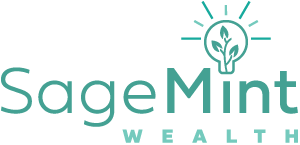
Everything to Know About Inheriting an IRA
August 9, 2024
Crafting a Family Mission Statement
August 27, 2024In recent years, donor-advised funds (DAFs) have emerged as a sophisticated yet accessible financial vehicle that’s reshaping the landscape of charitable giving. Among the many benefits DAFs offer, one of the most compelling is their ability to foster multi-generational philanthropy.
For families looking to make a meaningful impact with their wealth, DAFs provide a unique opportunity to establish a legacy of giving that reflects your values and vision. By combining financial advantages with the ability to engage multiple generations in philanthropic decision-making, a DAF allows you to strategically support the causes that matter most to you. This approach not only amplifies your charitable impact but also helps ensure your family’s commitment to giving is carried forward, making a difference for generations to come.
What is a Donor-Advised Fund?
A donor-advised fund (DAF) is a philanthropic vehicle established at a public charity that allows donors to make a charitable contribution, receive an immediate tax deduction, and subsequently recommend grants from the fund over time.
The operational structure of a DAF is straightforward: donors contribute cash, securities, or other assets to the fund. The sponsoring organization then establishes an account in the donor’s name, invests the assets, and manages all administrative aspects. Meanwhile, the donor retains the privilege of recommending grants to qualified charitable organizations at their discretion.
DAFs distinguish themselves from other charitable giving methods through their unique combination of benefits. Unlike direct donations, DAFs offer the flexibility to contribute immediately while deferring decisions on fund allocation. Furthermore, DAFs present a simpler and more cost-effective alternative to private foundations and charitable trusts in terms of establishment and management.
While the concept of DAFs dates back to the 1930s, their popularity has increased significantly in recent years. In fact, the National Philanthropic Trust reports that the number of DAF accounts in the United States increased 22.6% between 2018 and 2022, growing from 861,327 to 1,948,545.
This substantial growth is largely attributed to their accessibility, tax advantages, and the growing trend among donors towards more strategic, long-term philanthropic planning. As awareness of DAFs continues to expand, they’re increasingly becoming the preferred option for individuals and families seeking to create a lasting philanthropic impact through their charitable contributions.
Why Consider a Family Donor-Advised Fund?
For those aiming to create a thoughtful, enduring approach to charitable giving, a family donor-advised fund (DAF) offers many benefits of a private foundation without the complexities and costs associated with establishing and maintaining one. The sponsoring organization handles administrative tasks, streamlining recordkeeping and helping families avoid costly pitfalls.
Furthermore, DAFs provide an excellent platform for educating children about philanthropy, fostering a family culture of generosity. By involving multiple generations in giving decisions, families can strengthen bonds and instill values across generations.
From a financial perspective, DAFs provide significant tax advantages, including:
- An immediate tax deduction upon contribution, subject to IRS limits
- The ability to donate appreciated assets to avoid capital gains taxes
- Tax-free growth of the fund’s assets over time
This tax-efficient structure allows families to maximize the impact of their charitable dollars. DAFs also help simplify tax planning by allowing donors to separate the timing of their contributions and distributions.
Lastly, DAFs enable strategic, high-impact giving. First, families can research and plan their grants to ensure their contributions yield maximum benefit. Plus, as the fund grows over time, there’s potential for larger, more transformative gifts that can significantly influence causes aligned the family’s values.
How to Establish a Family Donor-Advised Fund
Establishing a family donor-advised fund (DAF) begins with selecting an appropriate DAF sponsor. Options generally include large financial institutions, community foundations, and single-issue charities, which cater to specific causes. Each sponsor type has distinct features, including minimum contribution requirements, investment offerings, fees, and grant-making policies.
Another critical component of establishing a family DAF is the appointment of fund advisors. This involves determining which family members will have the authority to recommend grants and manage the fund. During this step, families should also consider developing a succession plan to ensure the fund’s continuity across generations.
Once these steps are complete, it’s a good idea to create a comprehensive family giving strategy, including clearly defining your family’s philanthropic goals. Establishing decision-making processes can also be helpful, particularly in larger families, to ensure harmonious and effective grant-making.
Finally, setting guidelines for grant recommendations often helps maintain consistency and alignment with your family’s overall philanthropic vision. By thoughtfully addressing these elements, your family can create a robust framework for your donor-advised fund, setting the stage for meaningful and impactful giving for years to come.
Managing Your Family DAF
Effective management of a family donor-advised fund (DAF) requires ongoing attention to several key areas:
- Contributions. Most sponsors accept a variety of assets, including cash, securities, and in some cases, more complex assets like real estate or privately held business interests. Timing these contributions strategically can optimize tax benefits, particularly in high-income years or when donating appreciated assets.
- Investment Management. When selecting investments, it’s important to consider factors such as risk tolerance, time horizon, and philanthropic goals. Additionally, regularly monitoring and rebalancing your investments is essential to maintain alignment with your family’s objectives.
- Recommending Grants. This process involves researching potential grantees to ensure they align with your family’s philanthropic vision and meet the DAF sponsor’s eligibility criteria. It’s important to understand the specific process for submitting grant recommendations, including any minimum grant amounts or frequency limitations.
Involving family members in the management of your DAF can enhance its impact and legacy. Holding regular family meetings, for example, can provide opportunities to discuss the fund’s performance, review giving strategies, and make collective decisions.
These gatherings can also serve as valuable platforms for educating younger generations about philanthropy, financial management, and social responsibility. By diligently managing these aspects of your DAF, you can ensure your family’s philanthropic efforts remain focused, impactful, and aligned with your core values over time.
Potential Drawbacks and Considerations
While donor-advised funds (DAFs) offer numerous benefits, it’s important for families to consider the potential drawbacks and limitations before establishing one.
One significant consideration is the loss of direct control over contributed assets. Once you make a donation to a DAF, it becomes the property of the sponsoring organization. While the donor retains advisory privileges, the sponsoring organization has ultimate discretion over asset management and grant distributions.
It’s also important to carefully evaluate the DAF’s management fees. These typically include administrative fees and investment management fees, which can vary significantly among sponsors and impact the fund’s growth and grantmaking capacity over time.
While not universal, some DAF sponsors impose minimum distribution requirements. These policies, designed to ensure active charitable giving, may require you to grant a certain percentage of the fund’s assets on an annual basis. Before establishing a family DAF, be sure to determine whether such requirements exist and assess your family’s ability to meet them consistently.
Incorporating a Family DAF Into Your Financial Plan
Family donor-advised funds provide a strategic platform to maximize your family’s philanthropic impact while streamlining the giving process. Creating a family DAF can be a powerful way to instill values across generations and establish an enduring legacy of charitable giving.
Despite the potential benefits, it’s important to first ensure that a DAF aligns with your family’s unique philanthropic and financial objectives. Each family’s situation is different, and what works well for one may not be the best solution for another.
SageMint Wealth can provide personalized guidance to help you navigate this decision and assist you in determining the best approach based on your family’s dynamics and financial situation. Our team will work with you to develop a custom plan tailored to your values and goals. We encourage you to contact us to learn more about how we can help you create a meaningful and lasting philanthropic strategy for your family.
This information is not intended to be a substitute for specific individualized tax advice. We suggest that you discuss your specific tax issues with a qualified tax advisor.
Related posts
Live Well. Do Good.












